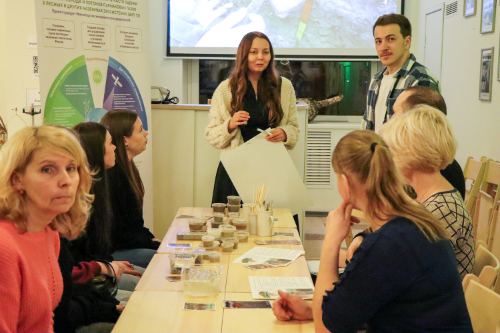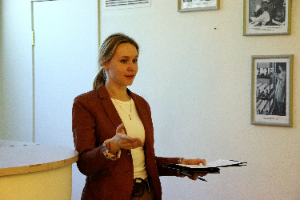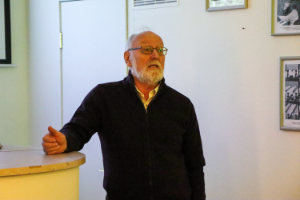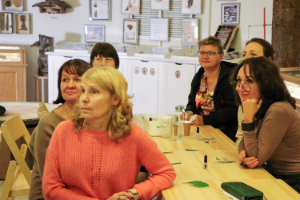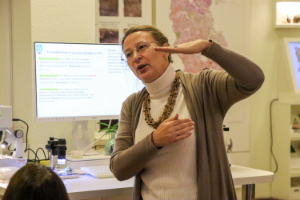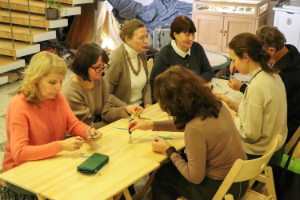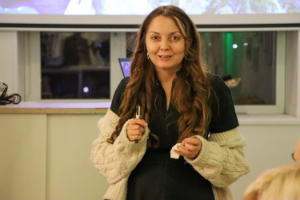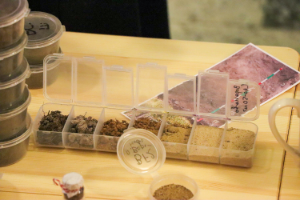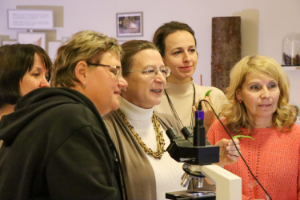The guests were welcomed by Olga Bakhmet, Corresponding Academician, Director General of the Karelian Research Centre RAS, Chairperson of the Karelian Branch of Dokuchaev Society of Soil Science. She reminded that Russia was where the globally recognized soil science school had appeared.
– The founder of soil research, Vasily Vasilyevich Dokuchaev, was a Russian scientist who told the world how soil is formed and was the first to postulate that it is a completely separate natural entity. His writings of the late 19th and early 20th century are still relevant today, and his teachings on soil have not changed much. The principles he laid down still work and scientists still use them.
Chairperson of the Karelian Branch of the Soil Science Society remarked also that the weightiest soil science schools beyond Russia have formed in the USA, Germany, France and some other European countries. Much attention to soil science is given in Latin America and Asia. Recently, a group of Karelian scientists returned from China, where among other institutions they visited the Institute of Soil Science.
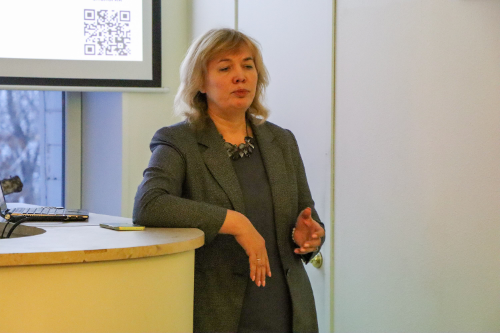
Olga Bakhmet, KarRC RAS Director General
– Soil research is in demand all over the world. It helps in studying forests and vegetation and provides answers as to why certain processes occur in terrestrial ecosystems. The things accumulated in soils over a long period of time will have an impact later on. This is a two-way process: soil is influenced by vegetation and vice versa - soil determines vegetation through fertility, – added the soil scientist.
Scientific Russia Portal features a video lecture “Vulnerable soils of Karelia” (in Russian) given by Olga Bakhmet in the Kivach Nature Reserve.
The topic of soils and their contaminants was covered during the event by Anton Solodovnikov, Researcher of the Forest Soil Science Laboratory, Forest Research Institute KarRC RAS. He highlighted the role of soils in our life and their direct impact on plant productivity, biodiversity and human health. Meanwhile, anthropogenic pollution is a grave problem. The generally recognized countermeasures include reduction and treatment of industrial emissions and discharges, waste recycling and disposal techniques, as well as inventory and monitoring of contaminated soils.
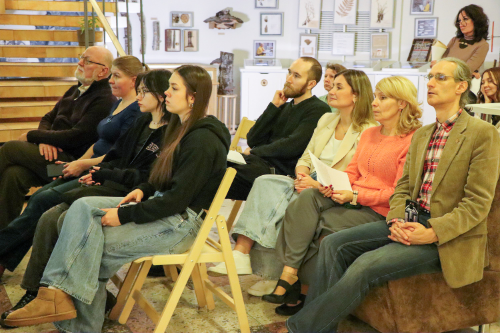
Participants of the Soil Day in Environmental Museum
The results of activities on estimating the dynamics of soil carbon pools were presented by Yulia Trachenko, Junior Researcher at the Department for Multidisciplinary Research KarRC RAS. These efforts are part of the process of creating a unified national system for monitoring climate-active substances: carbon pools and greenhouse gas fluxes in Russia. Terrestrial ecosystems can withdraw carbon from the atmosphere for a long time, regulating the concentration of greenhouse gases. However, when they are disturbed, for example by logging, CO2 is released again. Scientists need to know exactly how much carbon forests sequester in order to manage and conserve them.
In particular, researchers have already established that carbon storage in root systems is the greatest in coniferous forests of dwarf-shrub types: wild-rosemary, heather, bilberry. In birch and aspen stands, no sharp type-specific differences in carbon content in roots were revealed. Carbon stock significantly depends on soil stone and humus content. Podzols and illuvial humic soils contain more organic matter and, hence, their carbon stocks are higher.
Peat soils of Karelia were the topic of the lecture by Oleg Kuznetsov, Principal Researcher of the Mire Ecosystems Laboratory, Institute of Biology KarRC RAS. Peat is an organic rock formed through decomposition - dieback and incomplete decay - of mire plants under high humidity and oxygen scarcity. In Karelia, mires and paludified forests occupy more than a third of the territory. They all have peat soils of different types. Peat reserves in our region amount to 14 billion tons. Peat soils are the upper part of peat deposits. The can be of raised-bog, fen, or transitional types.
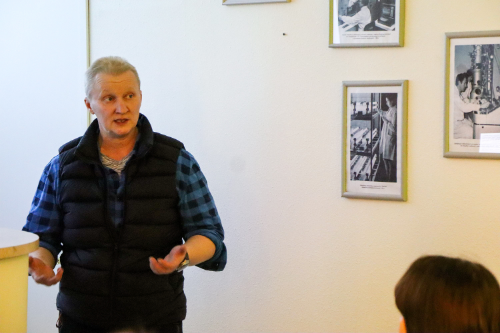
Yulia Tkachenko, Junior Researcher at DMR KarRC RAS
Life in soil was the subject of the presentation by Anna Saraeva, Junior Researcher at the Forest Research Institute KarRC RAS. Her study object is collembolans, aka springtails - small soil arthropods. A square meter of forest soil is inhabited by several tens of thousands of collembolans of 20-30 species! Pine forests of the Kivach Nature Reserve are known to harbor 51 springtail species. Information about them was included in the world database to enable researchers to conduct more in-depth and knowledge-based analysis of soils and improve the understanding of ecosystem processes at the global level. The results of this work are published in the international journal Scientific Data.
In addition to the public lectures, the museum visitors were offered the master classes “Studying soil horizons: creating a miniature soil profile” and “Plant respiration” by Nadezhda Nikolaeva, Secretary for Science of the Forest Research Institute KarRC RAS and Gulnara Akhmetova, Senior Researcher of the Forest Soil Science Laboratory, FRI KarRC RAS.
Photos by Artyom Grodnitsky / DMR KarRC RAS




